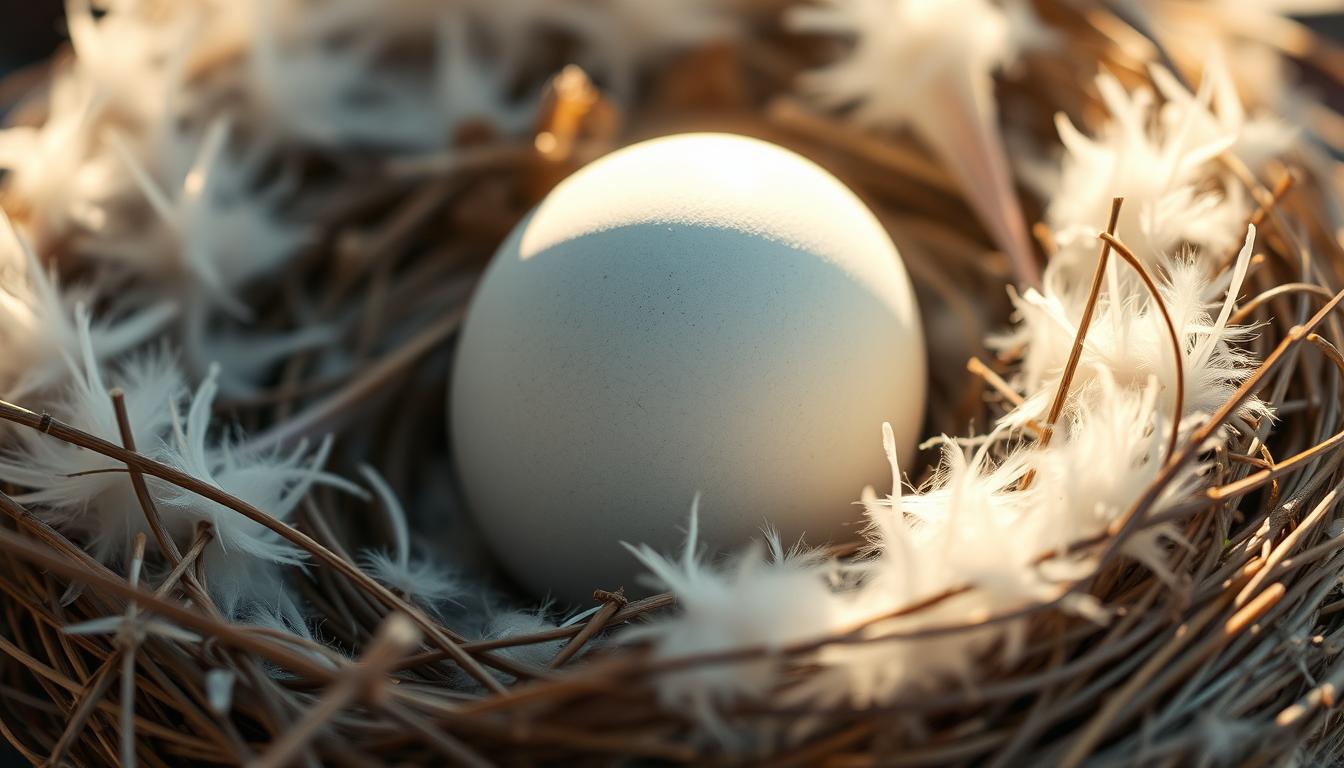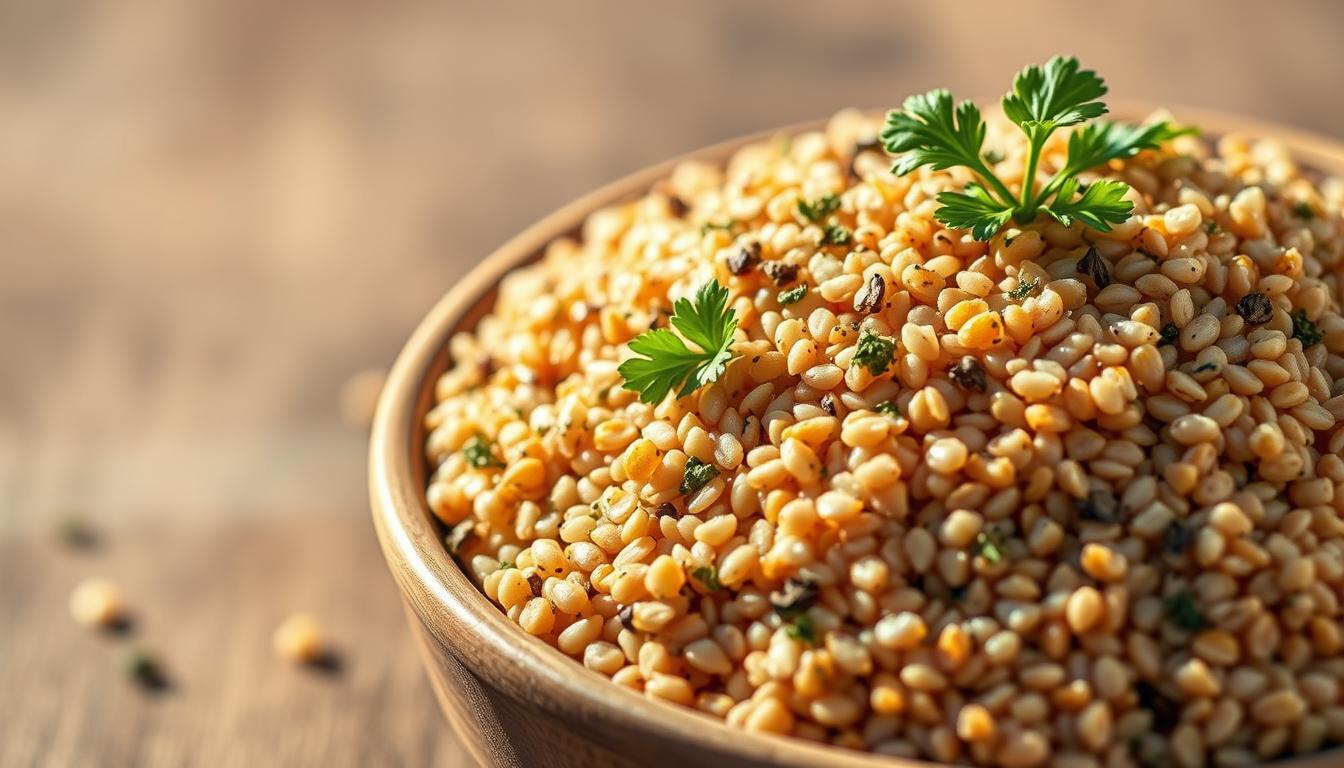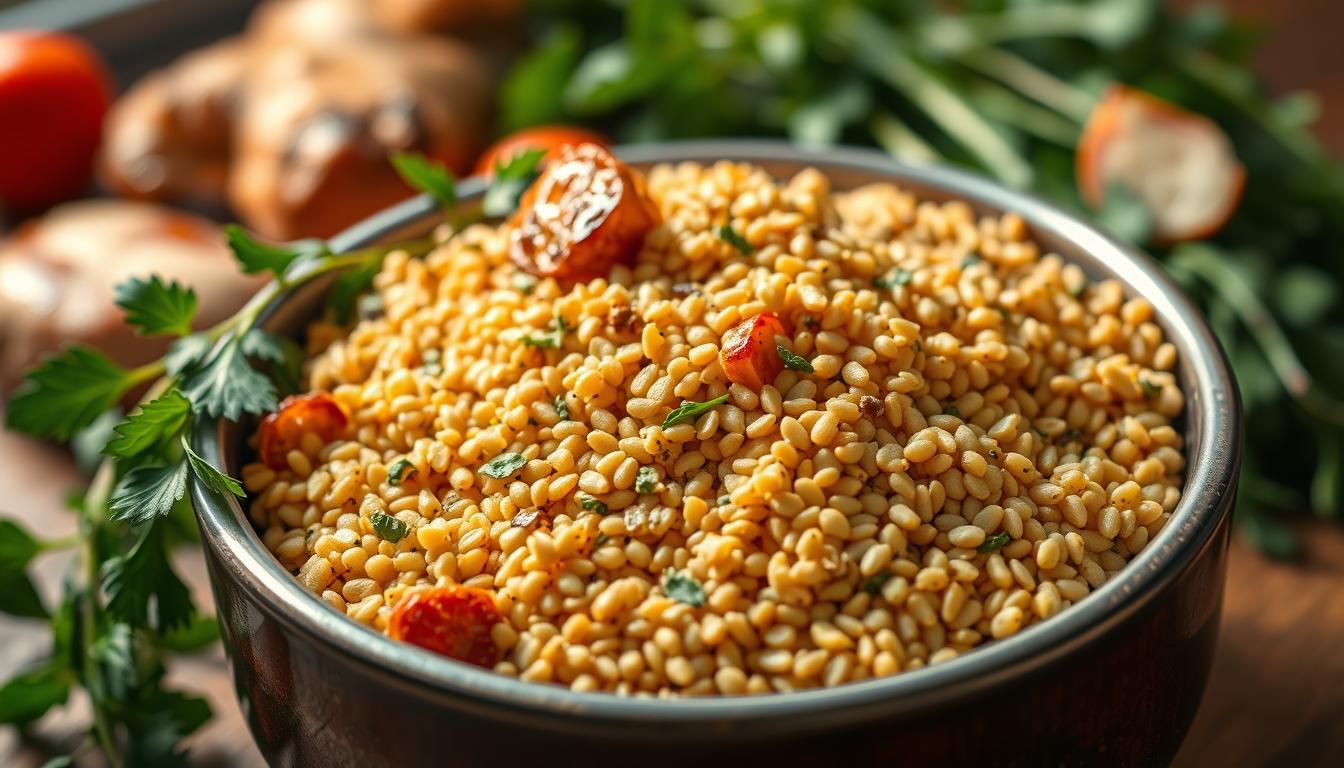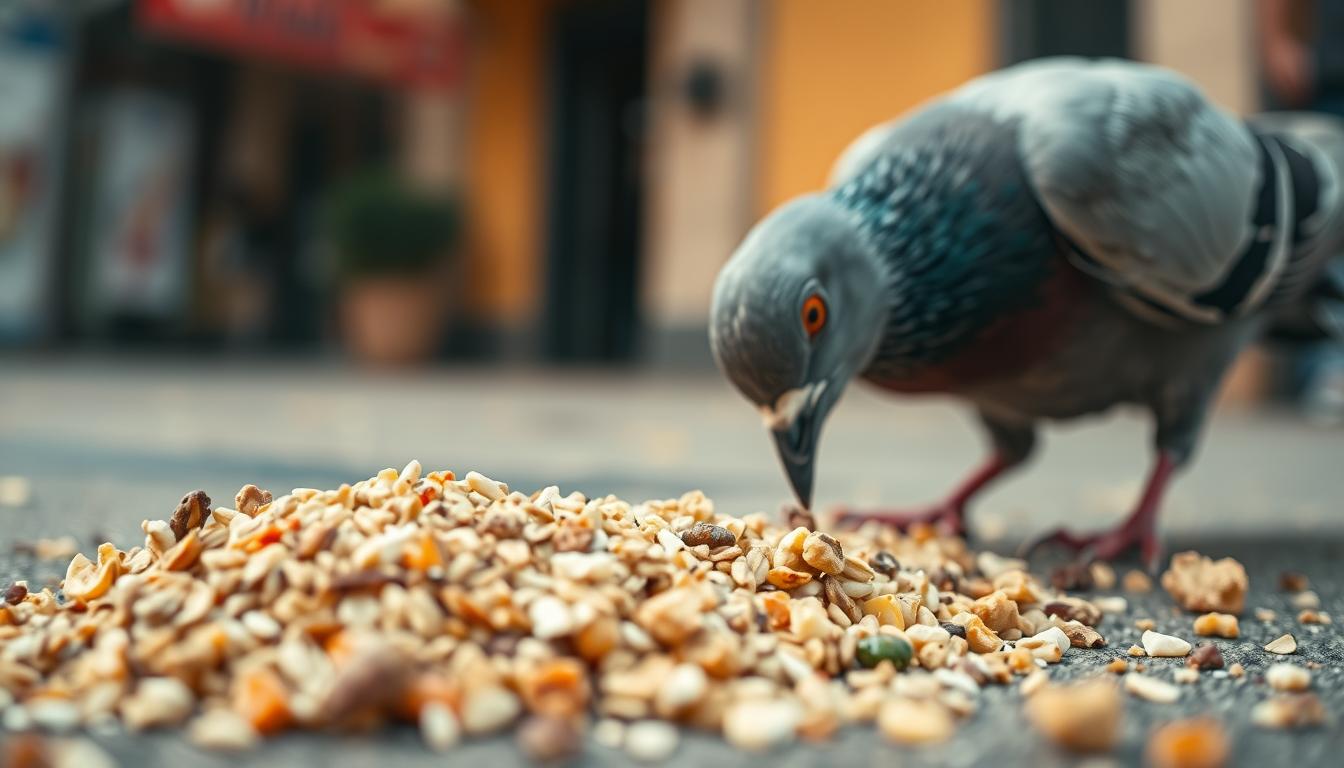Exploring pigeon eggs opens a window into the amazing world of bird reproduction. These small, delicate eggs show us the incredible journey of life. Pigeons, often seen in cities, have amazing reproductive abilities that many don’t know about.
A pigeon egg is more than a simple shell. It’s about 3 centimeters long and is usually white or slightly off-white. Sometimes, it has pale blue or brown speckles. These eggs are nature’s perfect way to protect and nurture the life growing inside.
In bird reproduction, pigeon eggs show the species’ strength. Pigeons lay two eggs at a time, and they can have up to four broods a year. The process of laying and incubating eggs shows us the amazing world of these adaptable birds.
Table of Contents
Key Takeaways
- Pigeon eggs measure approximately 3 centimeters in length
- Pigeons usually lay two eggs per brood
- Eggs can be white, pale blue, or brown with speckles
- Pigeons can produce up to four broods per year
- Egg incubation typically takes around 18 days
Understanding Pigeon Breeding Biology
Pigeons belong to the Columbidae family. They have a unique breeding biology shaped by thousands of years of domestication. This makes them very adaptable in both urban and rural areas.
The life cycle of feral pigeons starts with sexual maturity. Female pigeons can become ready to breed as young as 7 months. This quick growth helps their populations expand fast in good habitats.
Sexual Maturity and Breeding Potential
Learning about columbidae breeding means knowing important milestones:
- Pigeons grow to adult size around 4 weeks
- They reach sexual maturity between 6-7 months
- Their best breeding years are between 1-6 years old
Breeding Seasons and Reproduction Cycles
Domestic pigeons breed all year round, unlike many wild birds. This is especially true in cities with steady food sources. Their flexibility lets them have many broods each year.
Nesting Behavior Patterns
Pigeons show smart nesting habits for successful breeding. They usually:
- Choose safe, steady places for nests
- Build simple but effective nests
- Take turns incubating eggs, both male and female
Being able to breed all year makes pigeons one of the most successful bird species in human environments.
Pigeon Egg Characteristics
Understanding pigeon egg characteristics is key for bird lovers and scientists. These eggs are unique and play a big role in dove nesting and reproduction. They are small and delicate.
Typical pigeon egg characteristics include:
- Color: Pure white or slight off-white
- Size: Approximately 3 cm (1.2 inches) long
- Width: Around 2 cm (0.8 inches)
- Weight: Typically 19-23 grams depending on the pigeon breed
Looking at a pigeon egg, you’ll see its smooth, even surface. The shell is thin but strong, protecting the growing embryo. Egg weight and dimensions can vary slightly between different pigeon breeds, like King pigeons and Carrier pigeons.
Studies show King pigeons have slightly bigger eggs than Carrier pigeons. King pigeon eggs average 23.4 grams and 44.2 mm long. Carrier pigeon eggs weigh about 19.3 grams and are 39.8 mm long.
The pigeon egg’s consistent look makes them easy to spot during dove nesting. Their uniform appearance helps researchers and bird watchers track breeding and reproductive health.
The Complete Nesting Process
Dove nesting is a fascinating process that shows the intricate world of columbidae breeding. Pigeons work together and show great dedication in building their homes. This makes their nesting behavior unique in the bird world.
Understanding the nesting process helps bird lovers and researchers see these urban birds in a new light. Pigeons have developed smart ways to make safe and cozy nesting environments.
Nest Construction Methods
Pigeons use specific techniques to build their nests. These methods ensure survival and comfort:
- Create flat, platform-like structures
- Use twigs, grass, and small sticks as primary materials
- Build nests in sheltered, protected locations
- Construct nests quickly and efficiently
Preferred Nesting Locations
Pigeons are flexible in choosing where to nest. They look for places that offer:
- Protection from predators
- Stable surfaces
- Proximity to food sources
- Overhead cover
Parental Roles in Nesting
Columbidae breeding shows amazing partnership. Both male and female pigeons actively participate in nest construction and egg care. The male collects materials, while the female arranges them carefully.
This teamwork ensures the best environment for their future offspring. It highlights the incredible teamwork in dove nesting behaviors.
Egg Laying and Incubation Period
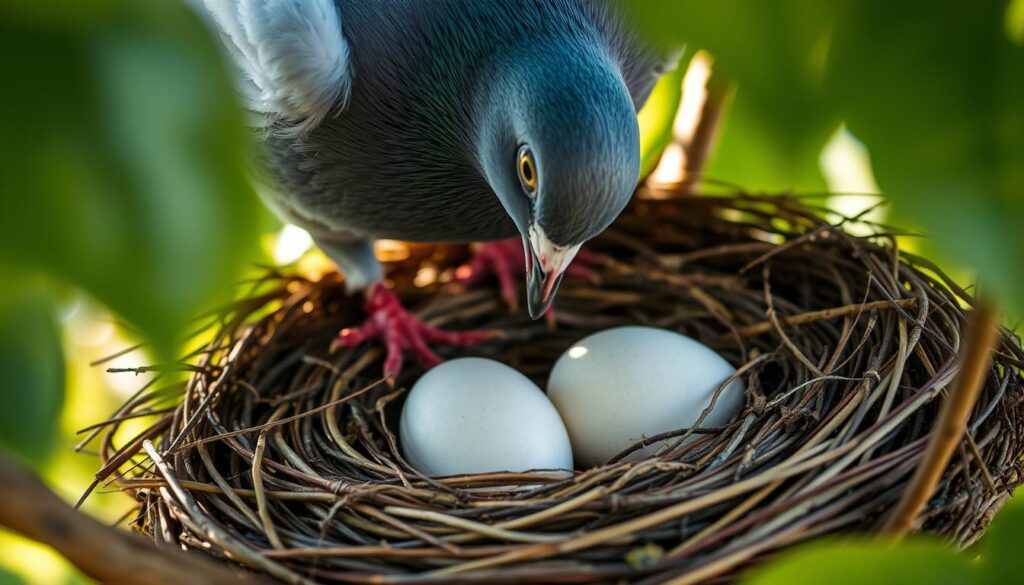
Bird reproduction in pigeons is quite interesting. It starts with egg laying. Female pigeons usually lay two eggs at a time. These eggs are very important for the species and need special care during incubation.
The egg-laying process has several key steps:
- Female pigeons lay eggs every other day
- A complete clutch usually consists of two eggs
- Eggs are laid in a carefully constructed nest
During incubation, which lasts about 18 days, both parents work together. They keep the egg’s temperature right and turn it often. This helps the embryo grow well. The conditions needed are:
- Maintain consistent temperature between 50-60 degrees F
- Turn eggs at least 3 times daily
- Keep relative humidity around 60%
It’s important to incubate eggs within 7 days of laying. Proper storage and incubation are critical for successful bird reproduction. Look out for signs of problems like navel infections, which can happen if conditions aren’t right.
By knowing these details, you can help with healthy egg development. This increases the chances of successful hatching.
Physical Properties of Pigeon Eggs
Pigeon eggs are fascinating structures that play a crucial role in bird reproduction. Understanding their unique physical characteristics helps researchers and bird enthusiasts gain insights into the reproductive processes of these remarkable birds.
Shell Composition and Thickness
The pigeon egg shell is a remarkable protective barrier for the developing embryo. It is about 0.18mm thick, surprisingly delicate yet incredibly strong. Its composition includes:
- Calcium carbonate crystals
- Organic protein matrix
- Microscopic pores for gas exchange
Average Weight and Dimensions
When examining pigeon eggs, you’ll find consistent physical characteristics that define their reproductive biology. Typical measurements include:
- Length: 2.5 to 3.0 centimeters
- Weight: 14 to 18 grams
- Color: Predominantly white or cream
Internal Egg Structure
The internal composition of a pigeon egg reveals a complex nutritional environment for embryonic development. Breaking down the egg’s interior shows:
- Yolk: Approximately 30% of total egg weight
- Albumen (egg white): Around 60% of total egg weight
- Shell and membranes: Roughly 10% of total egg weight
These precise physical properties ensure optimal conditions for successful bird reproduction, highlighting the intricate design of pigeon eggs.
Embryonic Development Stages
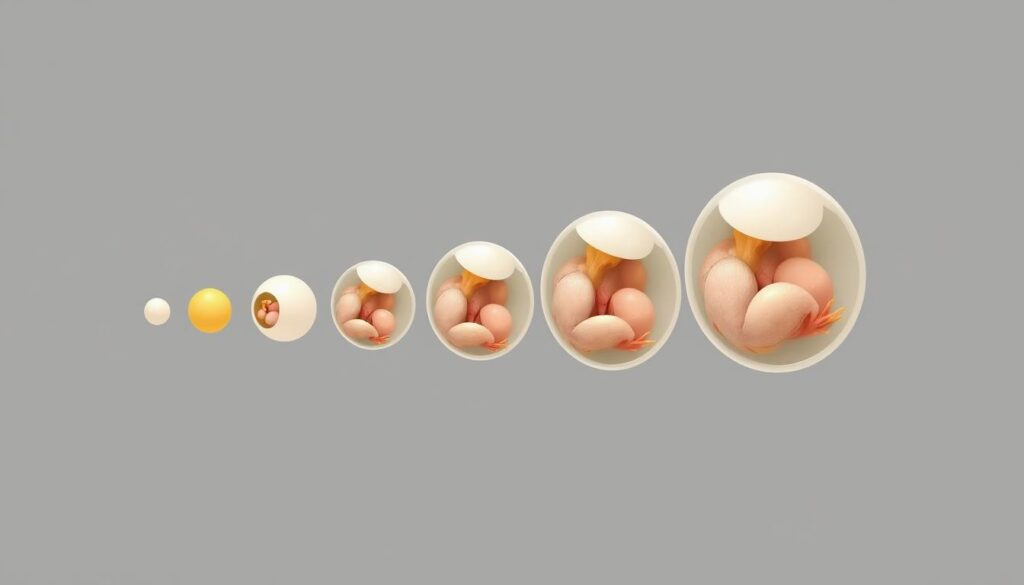
Squab development starts right after fertilization. Amazing changes happen inside the pigeon egg. These changes turn a tiny embryo into a living being.
The first 24 hours are key for the pigeon egg. The first cell division happens about 16 hours after fertilization. By the end of the day, the embryo looks like a tiny chick.
- Day 1: First cell division occurs
- Day 2: Heart formation begins
- Day 3: Beak and limb buds develop
- Day 10-14: Significant organ growth
The squab’s weight grows fast. It starts at 0.0002 grams on day one. By day 20, it weighs 30.21 grams. Environmental factors are very important in this process.
Light affects bird reproduction a lot. White light groups had a 91.26% hatch rate. Dark or red light groups had lower rates. The right incubation conditions are key for the embryo’s survival.
By day 20, the yolk sac is absorbed. This prepares the squab for its first breath outside the egg. This journey shows the amazing complexity of pigeon embryonic development.
Hatching Process and Timeline
The journey of a baby pigeon from egg to squab is truly fascinating. It’s a key part of the feral pigeon lifecycle. The hatching process is crucial for the young bird’s survival.
When it’s time to hatch, the baby pigeon uses a special tool called an egg tooth. This tool helps the squab break out of the egg. The time it takes can vary from a few hours to several days.
Breaking the Shell
The egg-breaking process is full of interesting steps:
- The squab uses its egg tooth to create initial cracks
- Movements inside the egg help expand the initial break
- Oxygen exchange begins through the developing cracks
- The chick gradually rotates inside the egg
First Hours After Hatching
Newly hatched pigeons are very vulnerable. They rely completely on their parents. In the first few hours, these young birds:
- Remain wet and somewhat exhausted from the hatching process
- Slowly dry out under the warmth of parent birds
- Begin to develop initial body temperature regulation
Initial Care Requirements
Squab survival depends on immediate parental care. Parents give essential crop milk, a nutrient-rich secretion. This supports the chick’s initial growth. Keeping the right temperature and feeding often are key during these early hours of the feral pigeon lifecycle.
Parent Bird Care During Incubation
Pigeon parents show great dedication to their eggs during breeding. Both male and female pigeons take on important roles in nesting and egg care. Their teamwork is crucial for the survival of their young through incubation.
The incubation period for pigeon eggs lasts 16 to 19 days. During this time, the parents take turns to keep the egg warm and safe. Here are some key aspects of their care:
- Temperature regulation at consistent levels
- Rotating eggs to ensure even warmth
- Protecting nest from potential predators
- Balancing personal nutritional needs
Male and female pigeons alternate in incubation duties. The male usually handles daytime shifts, while the female takes care of the eggs at night. This way, both parents can eat, rest, and stay healthy while keeping the eggs safe.
Pigeons also produce a special milk for their young in the first 10 days after hatching. This milk is full of protein and helps the squabs grow fast. It shows the amazing care that pigeon parents give to their young.
Common Issues with Pigeon Eggs and Pest Control Measures
Understanding pigeons’ life cycle shows big challenges in managing urban wildlife. Pest control needs to be both humane and effective. Traditional bird control methods often fail and can be harmful. So, new strategies are key to solving pigeon problems.
Good pest control focuses on stopping problems before they start. Removing food sources and using visual deterrents like wind spinners help. Sound-based methods and professional netting for nesting areas are also effective. But, installing nets needs careful skill to avoid trapping birds.
Pigeons are very adaptable, with some groups having up to six broods a year. Experts suggest managing pigeons by changing their environment. This means making cities less appealing for nesting and reducing food sources. It’s a way to keep birds safe while controlling their numbers.
It’s important to be ethical when controlling pigeon populations. Killing or moving birds doesn’t solve the problem for long. Instead, understanding pigeon behavior and ecology leads to better, more lasting solutions. This way, we can manage urban birds in a way that’s both effective and kind.
FAQ
How many eggs do pigeons typically lay?
Pigeons usually lay two eggs at a time. Both parents take turns to keep the eggs warm. The eggs are white or light cream in color.
How long does it take for pigeon eggs to hatch?
It takes about 17 to 19 days for pigeon eggs to hatch. Both parents keep the eggs warm and turn them regularly.
At what age do pigeons become sexually mature?
Pigeons become sexually mature at 6 to 8 months old. They can breed many times a year, especially in cities.
What do pigeon eggs look like?
Pigeon eggs are small and oval, about 1.5 inches long. They are white or light cream with a smooth, glossy surface.
Where do pigeons typically build their nests?
Pigeons like to nest in sheltered spots. They choose places like building ledges and roof overhangs for safety.
How can you tell if a pigeon egg is fertile?
To check if an egg is fertile, use candling around 7-10 days. A fertile egg will show blood vessels and a dark embryo under bright light. An infertile egg will look clear or show no development.
How long do baby pigeons (squabs) stay in the nest?
Squabs stay in the nest for 25 to 35 days. They depend on their parents for food and protection until they can fly.
What factors can impact pigeon egg fertility?
Many things can affect egg fertility. These include the birds’ age and health, nutrition, stress, toxins, and breeding conditions. Good nutrition and a stable environment are key.
How do pigeons protect their eggs from predators?
Pigeons protect their eggs by nesting in hidden spots and taking turns guarding. They also use camouflage. Both parents defend their eggs from threats.
Can pigeon eggs be relocated?
Relocating pigeon eggs is possible but tricky. It’s not recommended for beginners. If done, it must be carefully and quickly to avoid harm to the eggs.
Source Links
- Ways to Completely Ruin Your Pigeon Eggs And Hatchlings – https://www.sreejajude.com/ways-to-completely-ruin-your-pigeon-eggs-and-hatchlings/
- Improved YOLOv8 Model for Lightweight Pigeon Egg Detection – https://pmc.ncbi.nlm.nih.gov/articles/PMC11047490/
- Domestic pigeon – https://en.wikipedia.org/wiki/Domestic_pigeon
- Fascinating Pigeon Facts and Figures: 2024 Insights – https://www.ovocontrol.com/pigeon-facts-figures?srsltid=AfmBOopTFcvHBc31NITpMrpwBjTgXF4B4fXzqcT6HxNYUwiZEGzFK8pb
- Carcass, Egg Characteristics and Leg Bone Dimensions of Pigeons of Different Origin – https://pmc.ncbi.nlm.nih.gov/articles/PMC11117358/
- Improved YOLOv8 Model for Lightweight Pigeon Egg Detection – https://www.mdpi.com/2076-2615/14/8/1226
- Pigeon laying eggs on balcony is it good or bad according to vastu – https://bhaktibhawna.com/astrology-remedies-tips-vastu-tips-significance-pigeons-laying-eggs-on-balcony/
- Bird nests are as varied as the species that nest here – https://www.startribune.com/bird-nests-orioles-horsehair-pigeons-mourning-doves/600376601
- How To Get Rid Of Pigeons: A Complete Guide – https://aviancontrolinc.com/get-rid-of-pigeons/
- Trouble Shooting Failures with Egg Incubation – http://extension.msstate.edu/content/trouble-shooting-failures-egg-incubation
- Egg | Definition, Characteristics, & Nutritional Content | Britannica – https://www.britannica.com/topic/egg-food
- Information on the Pigeon, or “Rock Dove” – https://www.getlostpest.com/information-on-the-pigeon-or-rock-dove/
- Research Note: Effects of different light-emitting diode lights during egg incubation on hatching performance and embryo development in White King pigeons – https://pmc.ncbi.nlm.nih.gov/articles/PMC11318553/
- The Avian Embryo | Sustainable Poultry Center – http://sustainablepoultrycenter.extension.msstate.edu/publications/avian-embryo
- Baby Pigeons: All You Need To Know (With Pictures) – https://birdfact.com/articles/baby-pigeons
- Bird Life Cycle – 7 Stages, Diagram, and Facts | %%sitename%% – GeeksforGeeks – https://www.geeksforgeeks.org/bird-life-cycle/
- Pigeon Nesting Habits and Behavior: An In-depth Look – https://birdfact.com/articles/pigeon-nesting
- Why Do You Never See a Baby Pigeon? – https://www.birdsandblooms.com/birding/attracting-birds/bird-nesting/baby-pigeon/?srsltid=AfmBOoq3Y4uYwQKaa5Xkf8SqL–ialnB-FB3STxGdZaAqKopcUDVqXpT
- Ethogram of the Pigeon – Great Lakes Pigeon Rescue – https://greatlakespigeonrescue.org/ethogram-of-the-pigeon/
- Budgie Eggs | Nesting and Breeding | Budgies | Guide – https://www.omlet.co.uk/guide/budgies/nesting_and_breeding/eggs/
- Solving Problems with Pigeons – https://www.helpwildlife.co.uk/advice/problem-pigeons/
- OvoControl P | Pigeon Birth Control | OvoControl Pigeon Birth Control – https://pigeoncontrolphoenixaz.com/services/ovocontrol/
- Blog – https://www.pigeonpatrol.ca/blog/page/2/

